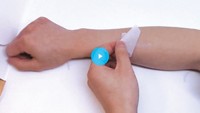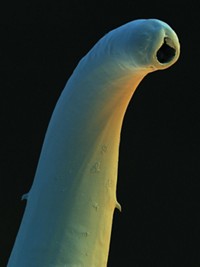Advertisement
Grab your lab coat. Let's get started
Welcome!
Welcome!
Create an account below to get 6 C&EN articles per month, receive newsletters and more - all free.
It seems this is your first time logging in online. Please enter the following information to continue.
As an ACS member you automatically get access to this site. All we need is few more details to create your reading experience.
Not you? Sign in with a different account.
Not you? Sign in with a different account.
ERROR 1
ERROR 1
ERROR 2
ERROR 2
ERROR 2
ERROR 2
ERROR 2
Password and Confirm password must match.
If you have an ACS member number, please enter it here so we can link this account to your membership. (optional)
ERROR 2
ACS values your privacy. By submitting your information, you are gaining access to C&EN and subscribing to our weekly newsletter. We use the information you provide to make your reading experience better, and we will never sell your data to third party members.
Biotechnology
Newscripts
Breathe in through the straw, and out through the butt?
by Laura Howes
July 18, 2021
| A version of this story appeared in
Volume 99, Issue 26
Suck up your hiccups

For most of us, hiccups are usually a temporary annoyance. The problem comes when the annoying spasms just won’t quit. Being shocked or surprised, breathing into a paper bag, or drinking from the wrong side of a glass are all well-known folk remedies for hiccups, but recently, a new solution has come onto the market—a reusable drinking straw. The inventors say this could be a game changer for people with chronic hiccups.
Hiccups are involuntary contractions of the diaphragm and the muscles between the ribs. The spasms pull air into the lungs, forcing the voice box open and . . . hic! Doctors know that two nerves—the phrenic nerve and the vagus nerve—are responsible. So Ali Seifi, a physician at the University of Texas Health Science Center at San Antonio, decided to develop a solution that would engage both the nerves involved.
Seifi tells Newscripts that he knew that he wanted to make a device that required a hiccuping person to expend effort when sucking and swallowing because sucking activates the phrenic nerve, and swallowing involves the vagus nerve. Stimulating both nerves at the same time works like a reset button. That’s why those folk remedies can work. But then he found an unlikely prototype by watching his son struggle to suck up a McDonald’s McFlurry through the ice cream treat’s specialized hollow spoon. “I said. ‘Wow, this can be a prototype that I am looking to make,’ ” he recalls. And from there, the process of iterative improvement began.
The result is much wider than a typical straw but has only a tiny inlet at the bottom, so you need to suck pretty hard to drink water with it.
A recent study describes the straw as a forced inspiratory suction-and-swallow tool, or FISST (JAMA Network Open 2021, DOI: 10.1001/jamanetworkopen.2021.13933). But FISST isn’t a very descriptive name, so the patented device is now for sale under the name HiccAway. And for those of us who might just get an attack of hiccups after a spicy meal or fizzy drinks, if your go-to cure isn’t working, maybe dig out a straw and pinch one end to make it really difficult to use. This Newscriptster thinks that’s definitely more discreet in public than the go-to: drinking water upside down.
Rear-end respiration
Artificial respiration has been on people’s minds a lot since the beginning of the COVID-19 pandemic, with news reports carrying images of patients connected to ventilators or external gas-exchange equipment in intensive care units around the globe. But what if there’s another way for doctors to keep blood oxygenated, one that bypasses the lungs altogether?

Takanori Takebe, a doctor and scientist at the Cincinnati Children’s Hospital Medical Center, recently led a study that turns the idea of respiration upside down. Inspired by loaches and armored catfish that can absorb air through their intestines, Takebe and coworkers wondered if that could work for mammals too. They found that butt breathing could be a lifesaver (Med 2021, DOI: 10.1016/j.medj.2021.04.004)
In lab-based experiments, they found that oxygen-deprived mice could survive if the gas was blown up their derrieres. But to treat mice like this also required that the scientists scraped mucus off the intestinal wall first. To avoid this scraping while still getting past the mucus, the team developed an enema of perfluorodecalin. Perfluorodecalin is a fluorocarbon that can sequester large amounts of oxygen.
Takebe says that as well as working as a gas carrier, the perfluorodecalin plays a role as a surfactant, increasing the surface area for gas exchange in the intestine and improving gas-exchange efficiency.
Takebe’s team found that the oxygenated perfluorodecalin enemas work in oxygen-depleted mice, rats, and pigs. But the hope is that this could one day help human patients in the clinic. His start-up, EVA Therapeutics, is now working to develop the idea of bottom breathing further, and Takebe says he hopes Phase 1 trials can start next year. Bottoms up?
Please send comments and suggestions to newscripts@acs.org.





Join the conversation
Contact the reporter
Submit a Letter to the Editor for publication
Engage with us on Twitter